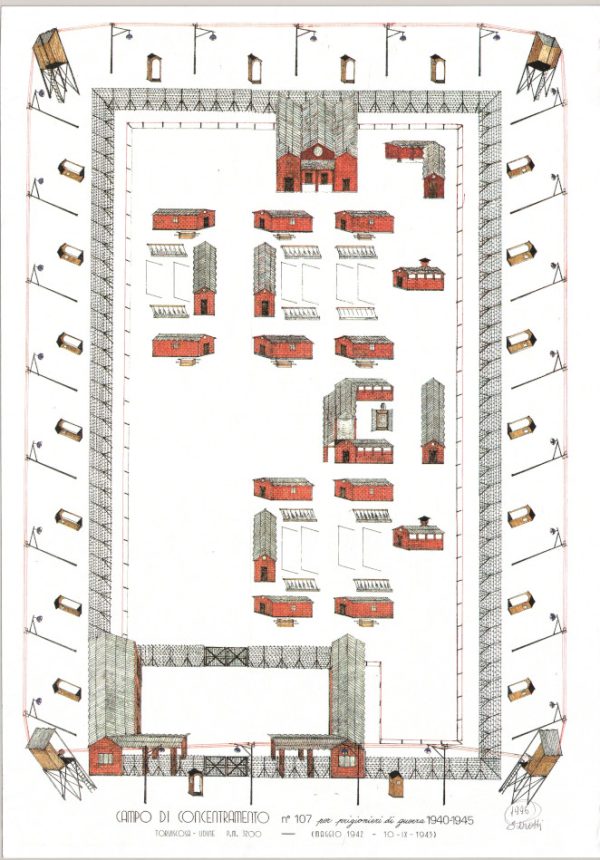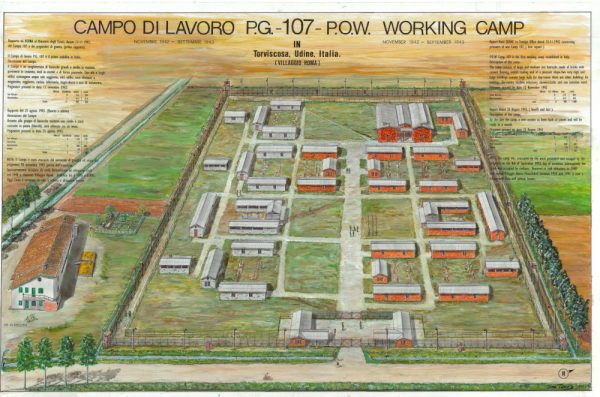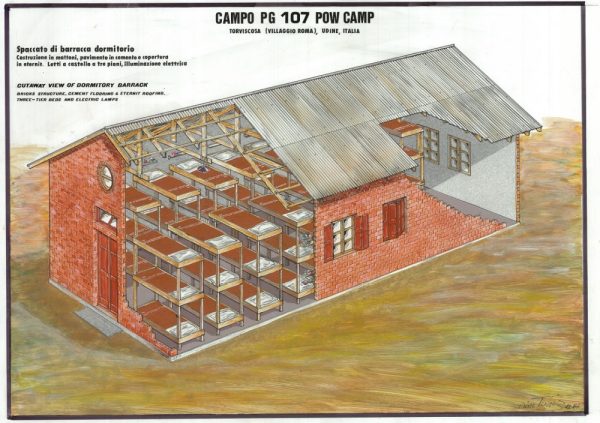The prisoner of war camp No. 107
The camp
Among the Italian prisoner of war camps, 107 was the first to be set up as a work camp to support the activities of private companies. The activities in which the prisoners were employed were the agricultural activities of SNIA Viscosa, one of the most important Italian companies of the time, which between 1937 and 1938 purchased a large amount of land in this area and began large-scale cultivation of Giant cane. The company also built a large industrial plant, where the cane was processed to extract cellulose for the production of textile fibres. The management of the entire enterprise was entrusted to a specially created group company, SAICI (Società Agricola Industriale per la Cellulosa Italiana).
During its twelve months of operation, Camp 107 was visited four times by Red Cross officials. The reports that accompanied these inspections comprehensively described the camp facilities and also the life and work of the prisoners of war.
The camp where the prisoners of war are quartered is located in a vast plain about 39 feet high […], it covers an area of 37,000 sq. metres, divided into two sections but not separated by barbed wire. Each section comprises four large and a medium size barrack. The buildings are disposed in a horseshoe shape. The washing and laundering is done in the courtyard, where the linen is hung out for drying. Further back stands a stone structure enclosing the toilets. Two very high, large buildings, located beside the second section, contain large halls appropriated for day-rooms, there are other buildings holding day-rooms, the kitchen, the infirmary with isolation ward, a hall with shower-baths, stores and shoemakers and tailor’s workshops. The buildings are solid brick structures with cement flooring and eternit roofing.
[…]
The large barracks are 3.10 meters high and measure 19×5,60 meters, the smaller ones, measuring 10,40×5,00 meters, are of an equal height. It was intended to have 108 sleeping-places in the large barracks and 70 in the smaller ones.
[TNA, War Office: International Red Cross and Protecting Powers (Geneva): Reports concerning Prisoner of War Camps in Europe and the Far East, «107 Italian P.O.W Terra Viscosa», relazione 1, 12 novembre 1942]
In all barracks, bunk beds were arranged on three levels:
The bunks here were three high and Charlie [Kerse] and I were lucky that we took bottom bunks. It wasn’t until much later that we realized how stuffy and putrid the air at the top bunks could become.
[MACKAY Peter Stark, A bit of time, [1978?], p. 26. Typescript kindly provided by daughter Mairi Mackay Kirk]





 Work camps for prisoners of war in Italy
Work camps for prisoners of war in Italy